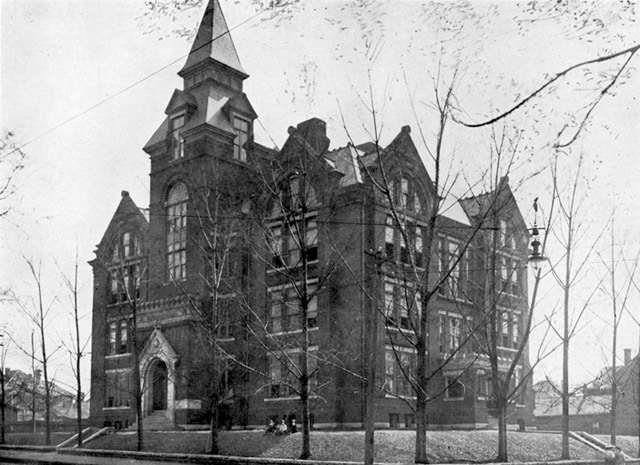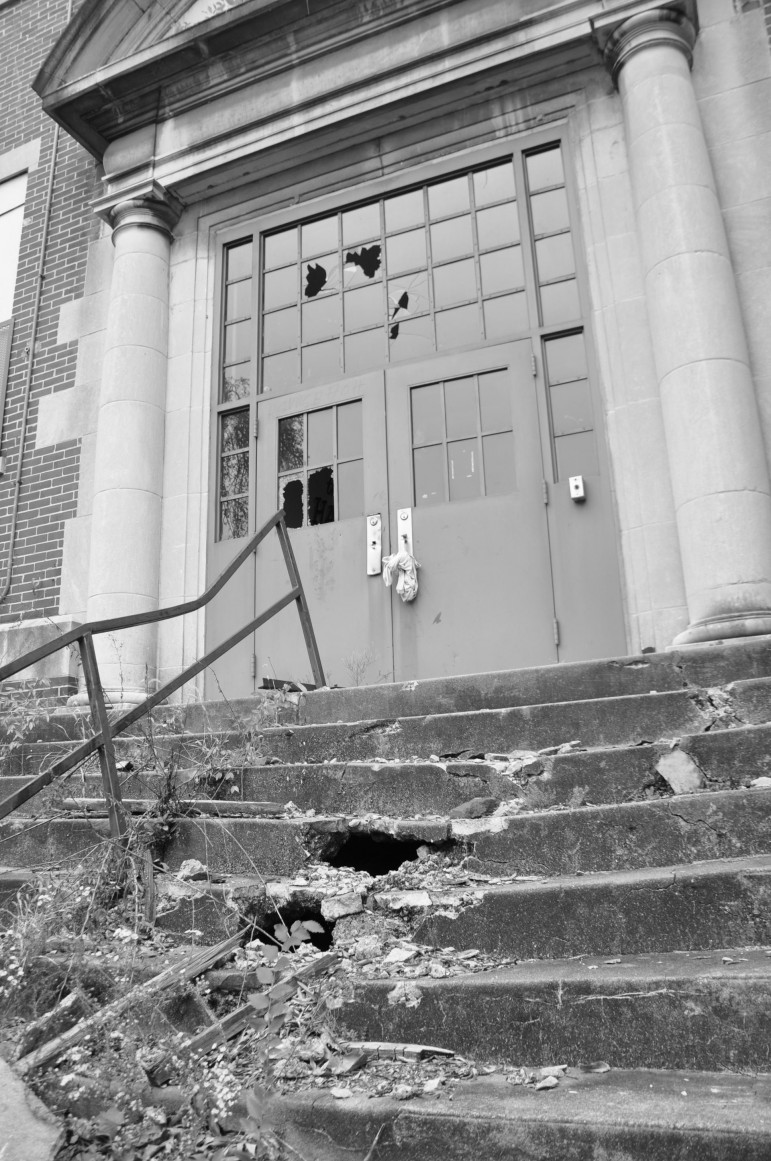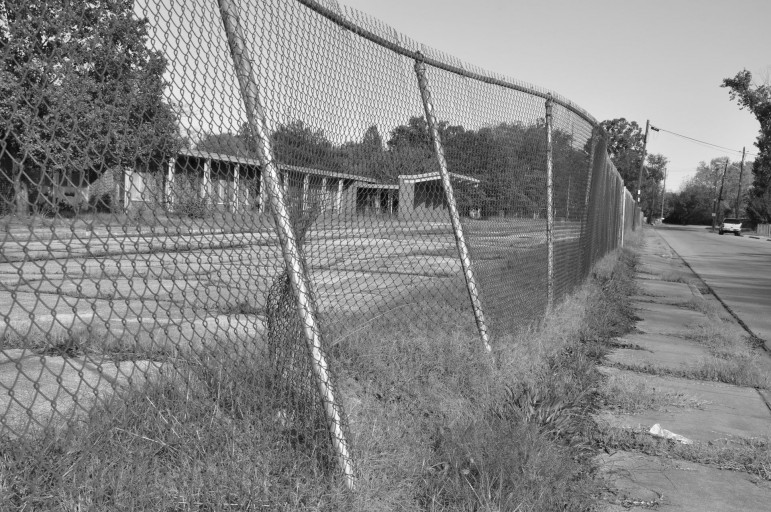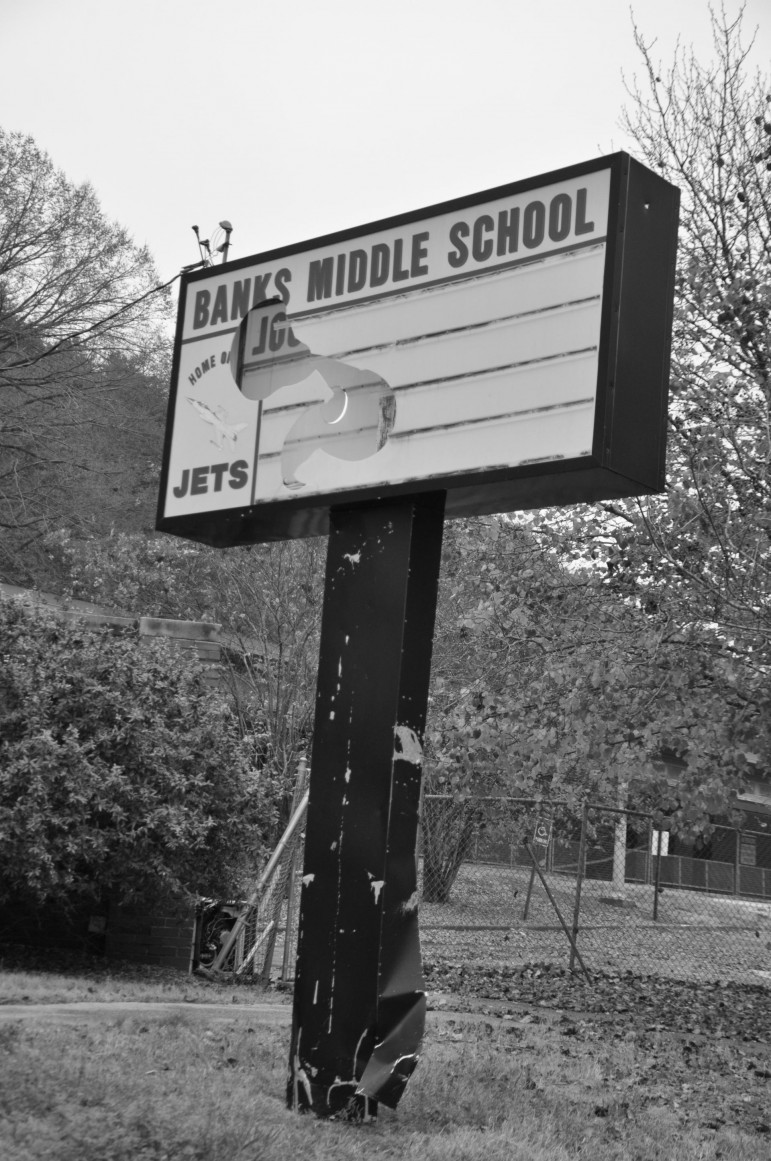What to Do With Birmingham’s Surplus Schools?
Michael Calvert from the Alabama Trust for Historic Preservation climbs the steps in front of the old Powell School. He inserts a key into the lock and removes a rusty chain from the door. Vacant for almost 15 years, Powell feels frozen in time. Calvert takes a look around. “So this is the building,” he says.
“We can step into one of these classrooms and you’ll get a notion of the appearance.” The walls are cracked and peeling, lined with old murals and bulletin boards. The rooms are covered in debris, leftover from a fire in 2011 that destroyed much of the roof and upper floors.
Vacant schools like Powell are a common sight throughout Birmingham. The buildings symbolize decades of population decline and budget cuts. Now, as the city center grows, many hope these large structures will be revitalized.
Blighted History
Powell was Birmingham’s first and oldest public school, built in 1888. It is located on the Northside of downtown, overlooking the recently built Park Place Condominiums. Calvert says the building is an important part of the city’s history.
“Powell School served Birmingham’s pioneer families and in recent decades, served the African American community,” says Calvert. “It has significance culturally for our community, as well as architecturally.”
Calvert is working with developers to restore Powell. He says it is a challenge to revitalize empty schools, and Birmingham has a lot of them. The Board of Education owns at least a dozen. Mike Zimmerman, chief of staff with Birmingham City Schools, admits residents complain about the buildings.
“The schools that are being currently occupied by students get first priority, then the buildings that are surplus,” Zimmerman says. “We acknowledge that we mow them and keep up with them, but probably, honestly not to the degree as we do the other schools.”
In Need of a Plan
This was the topic of conversation at a recent Birmingham City Council meeting. The Council has been focusing this year on addressing city-wide blight. Council members were critical towards the Board for not taking action with its surplus properties. District One councilwoman LaShunda Scales said, “For whatever reason, we don’t have any comprehensive plans as to what the school board, when these properties are no longer occupied, what do they plan to do with them – other than it serving as a blight in the community.”
The Board says the plan is to re-use or sell its surplus schools. Marlon King, the real estate broker for the Board of Education, says, “I think when you look at it from a community and economic development perspective, you can certainly find opportunities in vacant properties if they’re in the right location and you can identify to how it’s best use for some of those properties.”
The Limits of Possibility
But location is key. Dr. Anthony Hood, with UAB’s Collat School of Business, says most of Birmingham’s surplus schools are in lower income communities, where there’s not much incentive to re-develop a large empty building. Hood suggests there is a need to get creative, raising the question, “You know to what extent are we developing the space and the platform where we can get the best and the brightest to start coming up with ideas for adaptive reuse of our schools, or even to prevent the actual closing of the school in the first place?”
Hood says we need to re-purpose vacant schools so that they respond to the needs of a community. He is a graduate of Birmingham City Schools himself, and he says these buildings are more than just an eyesore. “You know for a lot of people that live in our inner-city neighborhoods, to see a school that was once full of life, to now be empty and vacant with chains on the doors, that is a psychological burden on the neighborhood,” says Hood.
Looking Ahead
Michael Calvert maintains hope for the future of the Powell School. There are plans to transform it into a 24-unit apartment complex. Calvert thinks it is a good idea, since Powell is located in a growing residential part of downtown. Walking through the empty building, Calvert identifies how the new design would unfold. “These corner classrooms would make an excellent apartment and there’s also restrooms and plumbing and so forth in an adjacent hallway, so these convert very nicely,” he explains. But the revitalization project is expensive. Developers are still working out the budget and there is no set date to begin construction.
For Powell, and so many schools like it, it seems the halls will remain silent a little bit longer.
Explore the map showing where the vacant former Birmingham City Schools are located. Is there one missing? Please let us know.
Nearly two dozen states sue the Trump administration over funding for CFPB
The attorney generals say the Trump administration is refusing to accept funding for the Consumer Financial Protection Bureau, which could hurt consumers in their states.
A rift in MAGA has top Heritage Foundation officials leaving to join with Mike Pence
The exit of more than a dozen staffers follows turmoil at Heritage and the larger conservative movement over the role of right-wing influencers who've promoted antisemitic and other extremist ideas.
The Gulf South played a key role in high execution counts for 2025
A report from the Death Penalty Information Center shows Alabama played a key role in executions and new death sentences.
Hundreds mourn Brown University sophomore Ella Cook, killed in campus shooting
Hundreds gathered at the Cathedral Church of the Advent in downtown Birmingham to remember Ella Cook. She and freshman MukhammadAziz Umurzokov were killed Dec. 13 when a gunman entered a study session in a Brown academic building and opened fire on students. Nine other students were wounded.
The Trump administration pauses wind projects off New England, New York and Virginia
An Interior Department statement did not detail the national security risks. It's the administration's latest pus to hobble offshore wind and limit renewable energy sources.
10 books to help you understand America as its 250th birthday approaches
Here are recommended reads about the United States — perfect for the history buff on your gift list, or anyone looking to learn more about how the U.S got to where it is today.












